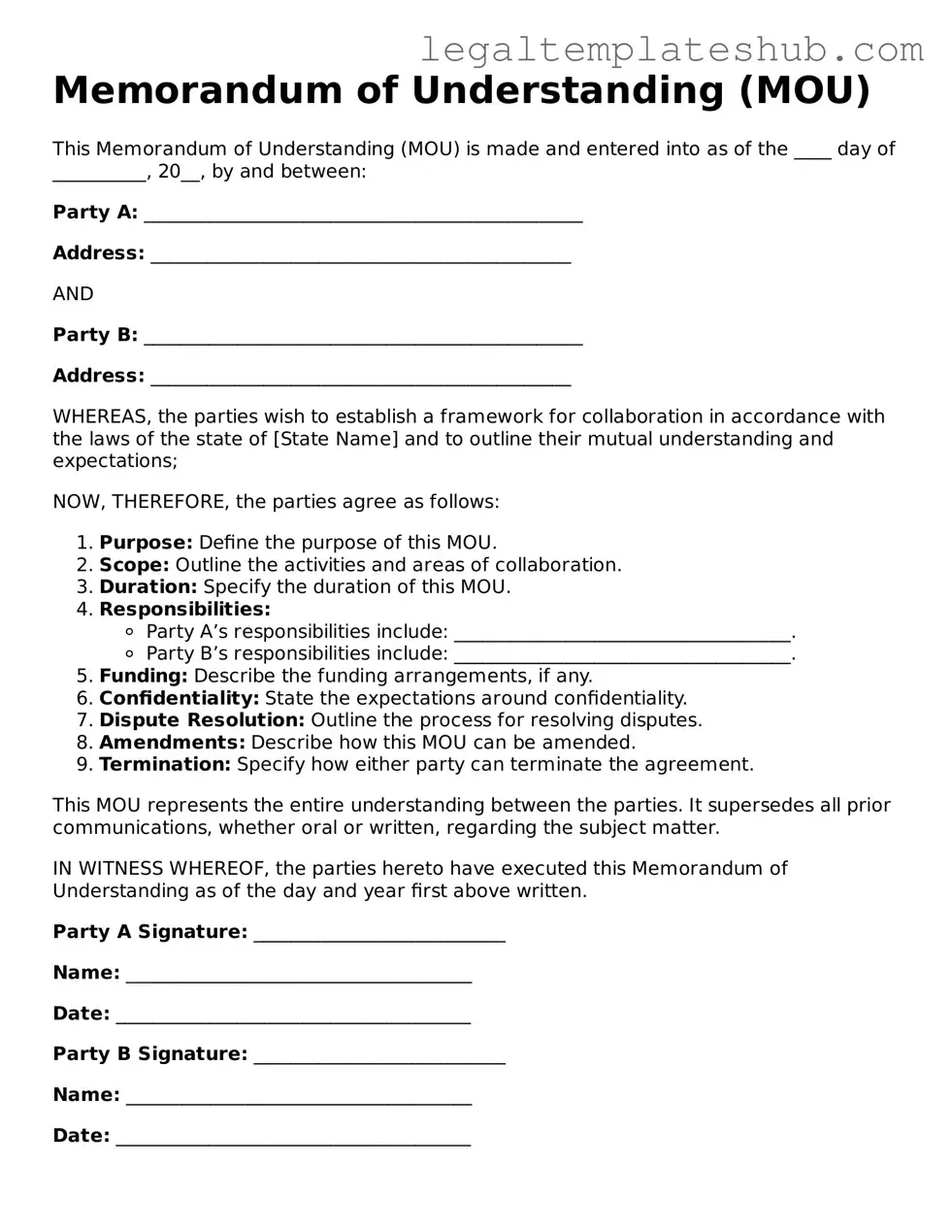Instructions on Filling in Memorandum of Understanding
After obtaining the Memorandum of Understanding (MOU) form, you are ready to begin filling it out. This document serves as a foundation for cooperation between parties and outlines mutual goals and responsibilities. Follow these steps to ensure that you complete the form accurately and effectively.
- Start by entering the date at the top of the form. This establishes when the agreement is being made.
- Clearly write the names of all parties involved in the MOU. Include their full legal names and any relevant titles.
- Provide a brief description of the purpose of the MOU. This should be concise yet informative, outlining the goals of the agreement.
- Detail the specific responsibilities of each party. Use bullet points for clarity, ensuring that each party’s obligations are clearly defined.
- Include any timelines or deadlines associated with the agreement. Specify important dates for deliverables or milestones.
- Address any confidentiality requirements. If sensitive information will be shared, outline how it will be protected.
- Indicate how disputes will be resolved. This can include mediation or arbitration processes.
- Provide a section for signatures. Each party should sign and date the document to indicate their agreement to the terms.
Once the form is completed, review it carefully to ensure all information is accurate and all parties are in agreement. After signatures are obtained, keep copies for your records and distribute them to all involved parties.
